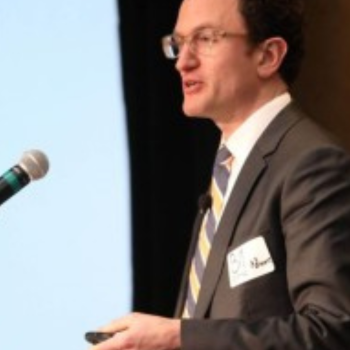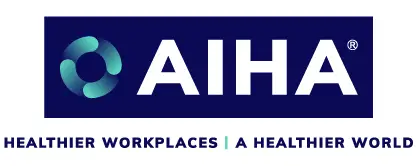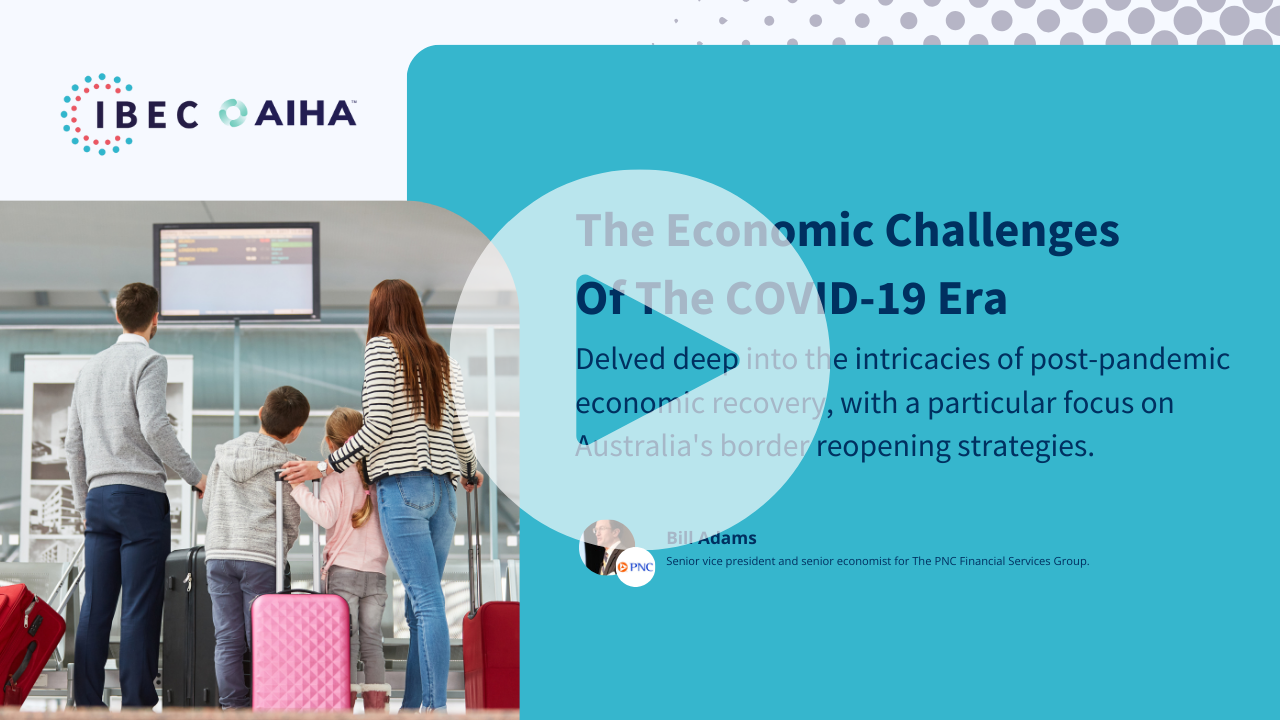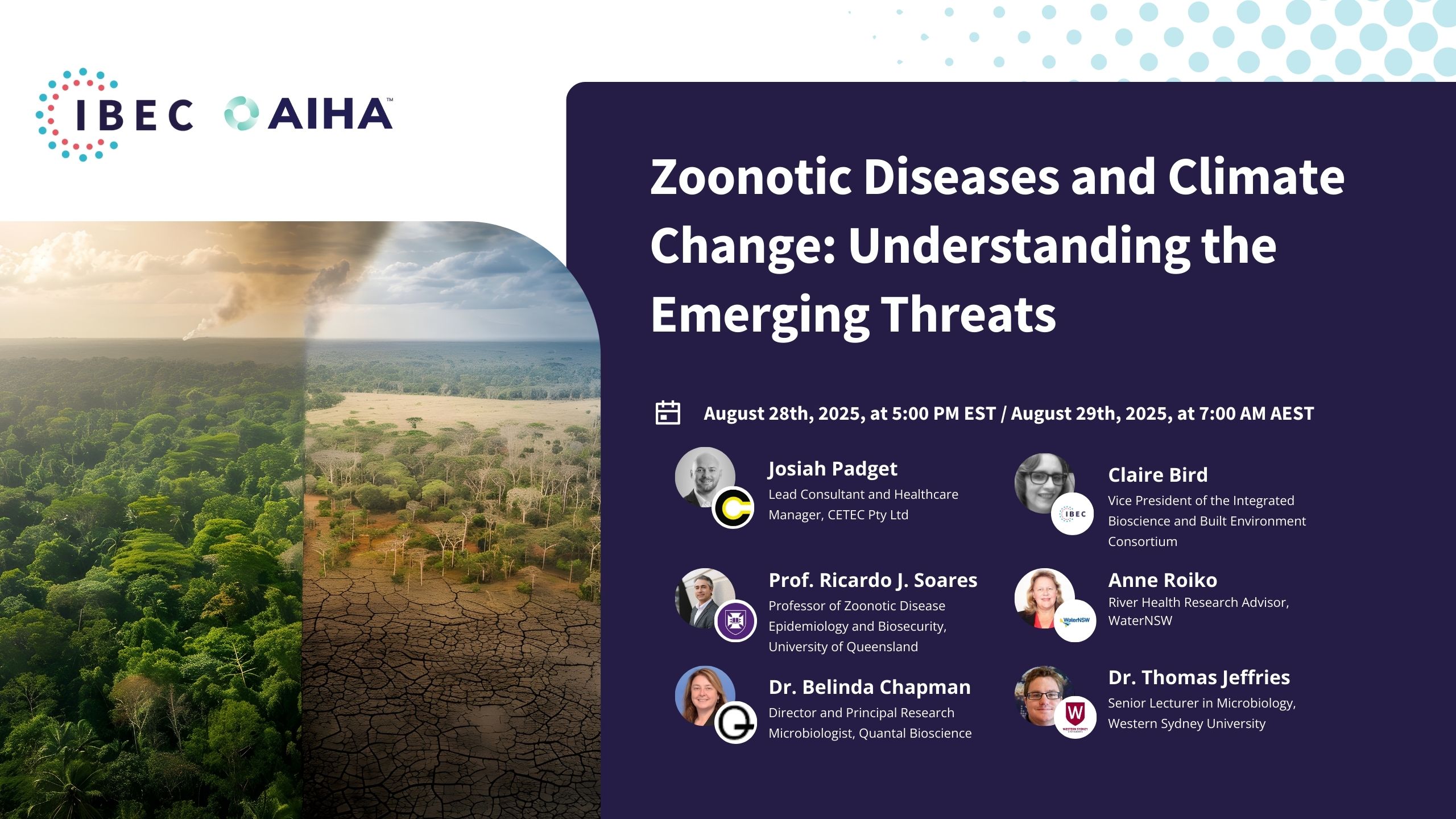Watch this session to learn about the pandemic’s effects on consumer behavior, corporate business models, and financial markets, and watch PNC’s forecasts for economic growth, the job market, inflation, and interest rates.
CLEAN Lessons Learned
The Economic Challenges Of The COVID-19 Era
In a captivating session led by Tony Cowan, economist Bill Adams delved deep into the intricacies of post-pandemic economic recovery, with a particular focus on Australia’s border reopening strategies. Drawing on his analysis of global measures, Adams highlighted that no single country had mastered every facet of pandemic management. Instead, he emphasized the importance of observing and adapting successful strategies from around the world. Adams touched upon pivotal elements such as test and trace, quarantine protocols, and effective public messaging. The discussion underscored the significance of flexibility, adaptation, and collective learning as nations grapple with the challenges and work toward solutions in these unprecedented times.
- Pandemic Management’s Economic Ramifications: Different nations implemented varied measures such as test and trace, quarantine protocols, and public messaging. Their effectiveness in these areas directly impacted their economic rebound.
- Evolving Leadership in Economic Recovery: The last 15 months saw nations rise as economic examples only to face setbacks later, indicating the fluidity of global economic resilience.
- The Importance of Clear Communication: For economic growth, it’s pivotal for governments to provide businesses and consumers with certainty through transparent communication about changing restrictions.
- Economists’ Unprecedented Challenges: The global economic shutdown has posed challenges never before encountered in economic forecasting and strategy.
- Economic Trends in High-risk Communities: Bill emphasized that high-risk communities faced a longer road to economic normalization, hinting at the uneven economic impact of the pandemic.
- The Power of Global Economic Observations: Bill highlighted the importance of countries learning from each other by observing international economic strategies and their outcomes.
- Constantly Changing Economic Exemplars: Bill noted that the “ideal” economic strategies during the pandemic have frequently shifted between countries, reflecting a changing global economic landscape.
- Pandemic’s Impact on Consumer Behavior: As restrictions change over time, consumer behavior and business planning need to adapt, influencing the economic trajectory of regions.
- Health Measures & Economic Impact: Protocols for controlling the pandemic, such as vaccine distribution, directly correlate with a nation’s economic reopening and recovery.
- Global Economy’s Adaptive Nature: Bill’s observations stress the adaptability and resilience of global economies, where one region’s success can rapidly shift to another over a short period of time.

Jayne Morrow
IBEC’s president, CEO, and Board founding member
Jayne has a broad portfolio of technical program and policy development expertise relevant to the United States and international science community priorities. Throughout her career, she has demonstrated a dynamic ability to work across stakeholder groups to foster engagement, create strategic visions, and build consensus on various technical programs and public policy areas, including national security, environmental health, public health and safety, and law enforcement.

Tony Cowan
Executive, project manager, and consultant.
Tony Cowan has guided strategic healthcare development and technology integration for 30 years. He is an executive, project manager, and consultant. His experiences include working with hundreds of physician groups to open Ambulatory Surgery Centers (ASC) on-time and on budget. Mr. Cowan specializes in moving medical products to market and innovating new healthcare solutions that reduce suffering and save lives while lowering costs. He provides risk management services while delivering compliance programs that exceed ongoing accreditation standards and audits medical systems to maximize revenue.

Bill Adams
Senior vice president and senior economist for The PNC Financial Services Group.
William (Bill) Adams is senior vice president and senior economist for The PNC Financial Services Group. In this role, Adams contributes to the analysis of the U.S. national economy and regional economies within PNC’s core footprint. He is responsible for forecasts of international economic conditions, interest rates, and exchange rates, covering major foreign developed and developing economies. He also is a member of the investment policy committee for PNC’s Institutional Asset Management line of business. Adams serves as PNC’s spokesperson on international economic issues, and frequently presents to PNC’s clients on the economic outlook. He is widely quoted in the financial press and is a regular guest on Bloomberg, CNBC, and other broadcast programs. Adams joined PNC in 2011. He was promoted to vice president in 2015, was elected a member of the PNC Institutional Asset Management Investment Policy Committee in 2018, and was promoted to senior vice president in 2020. During his time with PNC, the PNC Economics Division has been ranked repeatedly among the global financial sector’s most accurate forecasters of U.S. growth, inflation, and foreign exchange rates.
Jayne Morrow 00:00
Today, we are hosting the discussion as part of the Lessons Learned Summit Series. I’m Jayne Morrow, the president of IBEC. We founded IBEC to develop and distribute scientifically validated best practices to mitigate infectious disease transmission. Our goal is to make people feel safe gathering together once more. Through this series, we aim to share emerging best practices and facilitate expert-led discussions, connecting with leaders in various fields to address challenges we face in resuming our normal activities. Today, we’re particularly interested in discussing the economic challenges of reopening economies and understanding the associated economic data. We’re honored to have Bill Adams with us, who previously provided a keynote on this topic during our first summit. I’ll hand over to Tony to introduce Bill, but first, let me introduce Tony Cowen. He is the chairman of implementation and one of the founding members of IBEC. As a seasoned entrepreneur in technology and healthcare integrations, Tony has 30 years of experience in developing medical and public health facilities, and has played a significant role in introducing advanced medical equipment technologies to the market. His expertise ensures successful, timely, and budgeted openings of numerous facilities, meeting state licensure requirements, Medicare certification, and the Joint Commission accreditation. We’re excited to have Tony facilitate our discussion with Bill today. Welcome, Tony!
Tony Cowan 02:27
Thank you, Jayne. I recently revisited Bill’s presentation from 15 months ago and was impressed by how accurately he predicted the challenges we’d face. So, let me introduce Bill Adams. Bill is the Senior Vice President and Senior Economist for the PNC Financial Services Group. He contributes to the analysis of both the US national and regional economies within PNC’s footprint. Bill forecasts international economic conditions, interest rates, and exchange rates for major foreign economies, developed and developing alike. He is also a part of the Investment Policy Committee for PNC’s institutional asset management businesses. Frequently, Bill speaks about international economic issues and is a trusted source in the financial press. He has also made regular appearances on Bloomberg, CNBC, among others. Since joining PNC in 2011, he’s seen multiple promotions, with his division being recognized as one of the most accurate forecasters in various economic aspects. Before PNC, Bill was the resident economist for the Conference Board in China from 2009 to 2011. He co-authored “In Line Behind a Billion People,” which discusses China’s rising importance in the coming decade. Additionally, he has affiliations with the University of Pittsburgh Asian Studies Center and was the former president of the Economic Club of Pittsburgh. Bill earned his master’s from John Hopkins School of Advanced International Studies and his bachelor’s from Harvard. Welcome, Bill!
Bill Adams 05:01
Thank you, Tony. It’s a pleasure to be back with you. I’m pleasantly surprised that you believe I nailed the forecast from 15 months ago. So much has transpired between then and now. Sometimes, outcomes are unexpected, but occasionally, it all comes out in the wash. Let me guide you through our current perspective on the economy, the major forces influencing consumer and business behavior, and our insights on the pandemic’s effect on the economy over the upcoming year and beyond. Now, let me bring up my slides. Good morning to our Australian audience; this might be my first presentation to such an audience, and I’m thrilled.
Addressing the overall economic scenario, the recovery’s striking aspect is its speed. We experienced the most profound economic downturn across all the advanced economies that implemented lockdowns, followed by the swiftest recovery ever recorded. This recovery starkly contrasts with the post-2008-2009 economic downturn recovery. Broadly, two factors drive this:
The economic policy response (excluding public health policy) to this downturn was more decisive, faster, and aggressive than in 2008-2009. There was a flood of fiscal stimulus in the United States over the last two years. Simultaneously, central banks worldwide slashed interest rates to zero, pumping their economies with affordable credit and other financial aids, preventing financial chaos akin to the 2008-2009 period.
This economic recovery resembles more of a bounce-back from a natural disaster than a typical recession. The pandemic is essentially a natural calamity, unrelated to any economic imbalance. Such recovery from natural disasters tends to be swift, marked by extensive rebuilding expenditure.
Looking at the U.S. employment chart, although the current employment level remains below its pre-recession height, the recovery so far has been quicker than post the Great Recession. However, this recovery has been notably uneven. During the lockdowns, consumers’ reluctance or inability to patronize restaurants, travel, or entertainment caused a slump in service-based economy sections. To date, even with inflation adjustments, U.S. services activity remains below its pre-pandemic level. This sluggishness stems from ongoing public wariness about returning to crowded venues, altered behaviors due to the pandemic, and supply-side constraints.
On the flip side, manufacturing has flourished, particularly in durable goods like vehicles, household appliances, and electronics. This spike is attributed to redirected consumer spending from services to goods. However, a shortage of goods, especially due to chip shortages in the auto sector, hinders this growth.
In contrast, non-durable goods have seen a steady growth, not necessarily due to increased consumption volume, but possibly due to higher quality spending as a consequence of more home-centric lifestyles during the pandemic.
The housing and construction sectors also depict the recovery’s unevenness. The pandemic-induced lifestyle changes increased the demand for residential spaces, especially single-family homes outside city centers. This growth was bolstered by low-interest rates and fiscal stimulus. However, the non-residential sector faces challenges, given the uncertainties surrounding long-term demand for office spaces and a shift to e-commerce, which impacts retail spaces.
Another challenge has been the dichotomy between domestic economic activity, and, more specifically, local economic activity versus trade and business transactions between businesses that are geographically separate, particularly across national borders. The uncertainty surrounding visa rules, testing, mutual recognition of vaccines, and the unpredictability of changes to these rules has created complications. For instance, a colleague of mine traveled from the United States to the United Kingdom earlier this year. He believed he could return directly to the US, but discovered he had to quarantine in another country for several weeks before re-entry. Consequently, the recovery rate of international travel lags behind that of domestic travel.
When examining trade in goods and business transactions, it appears there’s been a shift towards de-globalization in terms of the ease of conducting certain business transactions. However, this doesn’t necessarily indicate a decrease in the overall volume of global trade. In fact, US imports, especially from China, reached record highs in the past year due to the American consumer goods spending surge. Although the US consistently runs a trade deficit, most consumer goods are imported from developing countries.
However, strains on supply chains and uncertainties regarding delivery times have been more pronounced for internationally traded goods than for those sourced domestically, and even more so for services. This pattern is evident in international travel, tourism services, and in the goods sector. Rather than a drop in the volume of goods traded, businesses are rethinking their supply chain strategies for the future.
Before the pandemic, there was already hesitation in the US about extensive global supply chains, driven in part by the US-China trade war during the Trump administration. Supply chain bottlenecks, such as the one at the Port of Long Beach in California, have only exacerbated this sentiment. Recent data shows an increase in delivery delays, with the worst disruption since the 1970s oil crisis. This ongoing supply chain challenge remains a significant issue, with concerns such as shortages of essential items like toilet paper and PPE from last year now evolving into broader economic drags in 2021.
The recent GDP report revealed a sharp slowdown in economic growth due to decreased spending on durable consumer goods, reduced residential construction activity, and a drop in US goods exports, all reflecting the turmoil in supply chains. The pressing concerns for US businesses are currently supply chain disruptions and labor scarcity.
In light of these supply chain issues, prices for goods where production cannot match the rapid recovery of consumer demand have soared, notably in the automotive sector. Car rental companies in the US, having liquidated their fleets in 2020 to raise cash, faced demand surges just as car manufacturers were grappling with supply difficulties. There’s been a semiconductor shortage affecting vehicle and electronics production. Consequently, new vehicle shortages have led to a surge in used car prices.
The pandemic has altered consumer preferences, with many now preferring personal vehicles over mass transit due to health concerns. The rise of remote work has also meant that people are relocating further from their offices, increasing the need for personal transportation.
Regarding inflation, excluding food and energy prices often provides a clearer picture of underlying trends. However, the current surge in durable goods prices, especially vehicles, has led to rapid increases in core inflation.
The enhanced unemployment benefits in the US expired in early September, causing a significant drop in the number of beneficiaries. This coincided with the waning of the Delta wave, which had caused a slowdown in job growth in sectors like leisure and hospitality. Upcoming data may show an uptick in job growth for October, but it remains to be seen how much of the labor scarcity was due to enhanced benefits, insufficient childcare availability, or lingering health concerns, especially among older individuals.
It’s a significant political issue in the United States, and it’s challenging to determine in real time how much of the drag on labor supply is due to each cause. Over the next few months, if cases continue to decline, these factors should exert less of a drag on unemployment, and health fears should also recede. Consequently, we can expect solid job growth over the next six months. We believe the level of employment in the U.S. will return to its pre-crisis level by mid-2022. We also foresee a tight job market due to the wave of retirements during the pandemic and an already aging workforce.
There has been a recent surge in energy prices. While these prices have risen over the last year, the past two to three months have sparked concerns about an energy crisis. This surge is partly due to Russia cutting back on natural gas supplies to Western Europe and geopolitical tensions between Australia and China. Such dramatic fluctuations indicate discrete shocks to the economy, highlighting the vulnerability of the global supply chain and logistics system.
The UK has faced an energy crisis as well. They experienced gasoline shortages not because of a lack of supplies but due to a dearth of truck drivers. Brexit, combined with the pandemic, has intensified labor shortages in the UK, leading to various economic disruptions.
A significant factor in this evolving scenario is the aging workforce in developed countries, stemming from the post-World War II baby boom. The pandemic has accelerated the retirement rate of this demographic, presenting a substantial challenge for businesses and potentially hindering macroeconomic growth.
On the inflation front, two significant factors will come into play. Housing prices have soared due to demand outpacing supply. Coupled with increased wages, especially in lower-paid industries, this will exert upward pressure on consumer prices. While we expect inflation to remain high until mid-2022, it should stabilize afterward, though prices will likely continue to rise.
Regarding monetary policy, the U.S. central bank is anticipated to reduce its asset purchases, signaling a potential rise in short-term interest rates in 2022. We foresee a stable path for interest rates over the next two years. However, unexpected policy shifts, such as the one by the Reserve Bank of Australia, pose risks to this stability.
Consumers, having benefited from the stimulus measures, possess significant savings. While this offers a tailwind for economic expansion, there’s a risk of economic policies tightening if central banks and governments deem less support necessary.
Interest rates have been volatile over the last year, but we forecast more stability in the near future. Vaccine availability in developing countries should provide more balanced global economic recovery. Central banks worldwide seem to agree that the period for maximum stimulus has ended, with discussions now focusing on the pace of normalization.
We don’t expect the same trend movements in currency rates, especially for the U.S. dollar, as witnessed in 2020-2021. The Australian dollar, however, may depreciate due to various factors, including a potential downturn in China’s housing market.
With that said, I’m eager to address questions and hear from this insightful group. Thank you.
Tony Cowan 46:07
Bill, when I listen to your presentation tonight and see the graphs, it reminds me of the global reports from PNC that I read every two weeks. I genuinely feel for C-level executives, small business owners, and department directors as they attempt to make informed decisions about their future. For clarity, PNC releases a bi-weekly global economics report. Can you elaborate on how business leaders might use this report as a dashboard for their decision-making?
Bill Adams 47:02
Of course, Tony, thank you for highlighting that. Let me share my screen again. Here are two hyperlinks, which I’ll also copy into the comments. These links direct you to where PNC publicly posts our economic reports and our global capital markets analysis. I author a report titled ‘Global Economic Highlights’, which provides a weekly synopsis, roughly 1000-1500 words long, about the world’s major economies. It sheds light on shifts in economic outlooks, interest rates, and price movements. A lot of the broad topics from this presentation are addressed in greater detail there. I welcome everyone to access these resources from our website. Typically, these reports are available the same day they’re sent to PNC’s clients via email.
Tony Cowan 48:36
I appreciate that. The COVID-19 pandemic has certainly woven many narratives, the full implications of which we might only grasp with sufficient hindsight. Considering the diverse approaches nations took in response to the virus and evaluating the subsequent global economic ramifications, it’s evident that some shutdown measures might have saved lives, but at the cost of economic losses. Keeping track of these developments is crucial if we hope to understand them fully in retrospect. Your insights, especially concerning labor force reactions, have been invaluable. Back in August 2020, you mentioned labor reluctance. Historically, pandemics have been catalysts for labor change. For instance, the Black Death led to a decline in peasant farmers, which, in turn, saw landowners working their lands, culminating in the emergence of a middle class. Given this background, has there been a revised approach to discussing unemployment that offers a deeper understanding of why people are unemployed?
Bill Adams 50:27
That’s a nuanced question, Tony. Roughly speaking, we are down by 4.7 million in employment from the pre-pandemic level. More than half of that number, based on the Bureau of Labor Statistics’ household survey, is attributed to individuals over 55 who are currently unemployed and seemingly uninterested in seeking employment. There’s a significant demographic impact at play here. If the pandemic abates and people regain confidence in safe working conditions, we might observe increased labor force participation across all age groups. Typically, as the job market strengthens, retirees and older workers tend to re-enter the workforce either full-time or part-time. A noteworthy difference post-pandemic is the rise in self-employment, with an increase of approximately 600,000 since the pandemic’s onset. This shift might be attributed to people’s evolving values and lifestyles due to the pandemic, pushing them toward entrepreneurship. This trend will likely influence business models, with a tilt towards franchises and owner-operator ventures, taking precedence over traditional employment structures.
Tony Cowan 53:34
Your observations align with some of the projects we’re overseeing at IBEC, especially in collaboration with the CDC and the American Industrial Hygiene Association. A key sector we’re focusing on is the gig economy, where individuals essentially operate as their own bosses, deciding their work timings and affiliations, be it with Amazon, GrubHub, or Airbnb. Considering your insights, I can’t help but think of you as a behavioral economist. In your economic forecasting, how pivotal is workplace safety and consumer confidence in their safety at work?
Bill Adams 54:24
Safety is paramount, Tony, and it’s an area where I sometimes feel we lack robust information. This data gap can significantly influence forecasting deviations. One of the hardest-hit sectors, expected to be the last to recover, is the Central Business District economy, particularly in major cities. The massive shift to remote working has dramatically impacted these areas, with reduced demand for consumer services like restaurants and bars. While the office’s role in our lives is being redefined, safety remains at the forefront of concerns. The recent surge in Delta variant cases prompted numerous companies to delay their office return plans. Enhancing the built environment to control risk could help reduce uncertainties, especially in the face of potential future outbreaks or pandemics.
Tony Cowan 56:52
Yeah, when we last met, your charts were projecting four or five months into the future. You had the variable of the vaccine release date, which was compromising your confidence in making further projections. Now, with the vaccine available, to what extent is vaccine hesitancy impacting economic resurgence? Do you see that reflected in actual numbers?
Bill Adams 57:26
The simple answer is yes. But to be more granular, it’s extremely complex. The regions most vaccine-hesitant are also where people have been least likely to modify their behavior due to health risk perceptions. However, if we observe the behavior of older Americans, even in vaccine-hesitant areas where vaccination rates are low and public places are bustling, older people are not returning to their previous consumer behaviors or travel patterns. An area I neglected to mention earlier is non-residential spending in houses of worship. This sector remains weak in the US. While it’s not a large part of the overall economy, it’s significant because those who frequent churches and other worship places tend to be older, and these activities are face-to-face. Thus, this aspect of the economy will recover slower, and sanitizing these spaces will greatly influence that rate.
Tony Cowan 59:14
I received a question about the US’s massive infrastructure bill. When it’s passed by Congress, are you including this bill in your forecasts? Or do you wait until after it’s ratified? Also, does the government ever ask you about the potential economic implications of passing such bills?
Bill Adams 59:43
We have ongoing dialogues with various government entities about our forecasts and potential changes. Currently, our forecasts don’t factor in the infrastructure bill because its specifics change frequently. I’m grateful we don’t have to update our forecast daily based on fluctuating numbers. In terms of the bill’s potential impact, even though $3.5 trillion sounds massive, it’s spread over a decade. Annually, the proposed infrastructure spending would average $350 billion, which, while significant, isn’t a complete overhaul of the US economy. If spent wisely, it can ease bottlenecks in the economy, reduce port delays, traffic congestion, and improve overall quality of life. The softer infrastructure allocations, like pre-K and education, will likely drive long-term economic growth. However, because our primary focus is on immediate future projections, the full benefits of early education investments may go unnoticed in our assessments. If the bill is “funded”, meaning tax hikes offset increased spending, consumer spending might slow due to reduced disposable income, balancing out the growth from public spending.
Tony Cowan 1:04:04
When we virtually halted the economy last year, it reminded me of hospitals during disasters; they don’t recover immediately. Currently, with supply chain and labor shortages, how much of this turmoil is attributed to the complex process of restarting a vast system, and how much of it is perhaps more systemic?
Bill Adams 1:04:59
Supply chain disruption is largely due to the skewed distribution of consumer spending, with a disproportionate demand for consumer goods. This strain is amplified by the rise in e-commerce, which relies heavily on logistics. E-commerce giants and courier services are not expected to revert to their pre-pandemic states. In terms of energy, there’s been a long-term shift from coal to natural gas and renewables. As energy demand plummeted last year, many coal facilities ceased operations. Now, reigniting those facilities is not only intricate but may also lack capital investments, especially given the global focus on reducing coal consumption. The current energy shortages stem from a significant drop in production and the inability of alternative energy sources to quickly meet the rising demand.
Tony Cowan 1:08:03
So, as Australia opens its borders between infected and uninfected jurisdictions, this is a great segue to my question. What advice would you give regional governments and communities to ensure a return to sustained growth?
Bill Adams 1:08:26
That’s a tough question. As an economist who analyzes and forecasts for different countries, I gain insights from observing how various countries have responded to the pandemic. Countries have implemented a variety of measures like test and trace, quarantine protocols, restrictions on activity, public messaging about changing restrictions, vaccine distribution, and management of the healthcare system. While some countries excel in one aspect, they might falter in others. Over the past 15 months, it seemed like at any given time, one country had the perfect formula, only for another to take that spot six months later. So, if I had to give one piece of advice, it would be to maintain humility. Observe what other jurisdictions are doing, identify what’s working for them, and try to apply those successful strategies locally. No single country has perfected every aspect of pandemic response, but there’s much to learn from looking outside of our own boundaries.
Tony Cowan 1:10:40
When you decided to become an economist, did you ever imagine grappling with a question like, “What would happen if we shut down the global economy?”
Bill Adams 1:10:52
I secured my position before anyone posed such a challenging question. I honestly don’t know how I would have reacted if someone had asked me that when I started.
Tony Cowan 1:11:03
Now, I’d like to ask Jamie to join us to pose a few more questions.
Jayne Morrow 1:11:15
Bill, your insights were invaluable. The dynamics of the situation over the past nearly two years are intriguing. You mentioned the challenges faced by houses of worship. We have a “Lessons and Learn to Unsafe Gathering” event for houses of worship on December 9. We’d be honored if you could join us. Additionally, on December 7, we’re hosting a needs assessment summit. This will be a day-long event, and we’ll discuss several topics including challenges faced by frontline workers in various sectors. This is in collaboration with the American Industrial Hygiene Association. We also have several “Lessons Learned” summits planned for this winter. Your participation today was invaluable, and we hope to continue this conversation, ensuring safety and preparing better for any future pandemics. I think we’ve addressed most questions. Tony, thanks for the engaging conversation today. And Bill, thank you for your insights. It’s always a pleasure seeing you. Stay safe and take care, everyone.
Sponsor Spotlight

American Industrial Hygiene Association (AIHA)
AIHA is the association for scientists and professionals committed to preserving and ensuring occupational and environmental health and safety (OEHS) in the workplace and community. Founded in 1939, we support our members with our expertise, networks, comprehensive education programs, and other products and services that help them maintain the highest professional and competency standards. More than half of AIHA’s nearly 8,500 members are Certified Industrial Hygienists, and many hold other professional designations. AIHA serves as a resource for those employed across the public and private sectors and the communities in which they work.
Have a question about the event?
Connect with IBEC experts directly! Drop your queries below, and let's further the dialogue on preventing the spread of infectious diseases.


